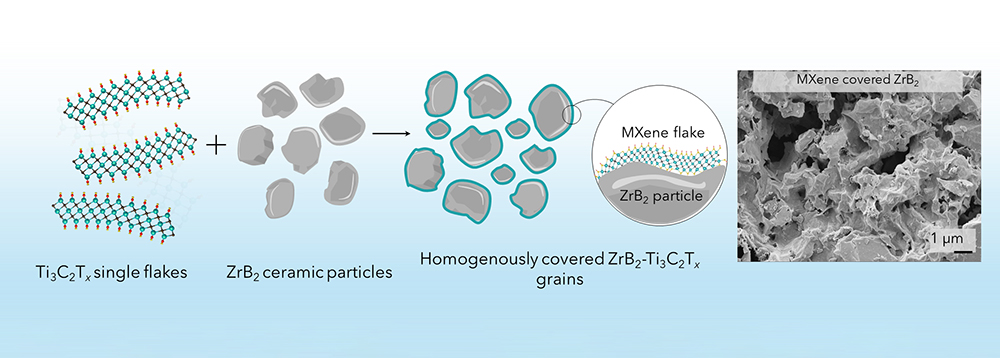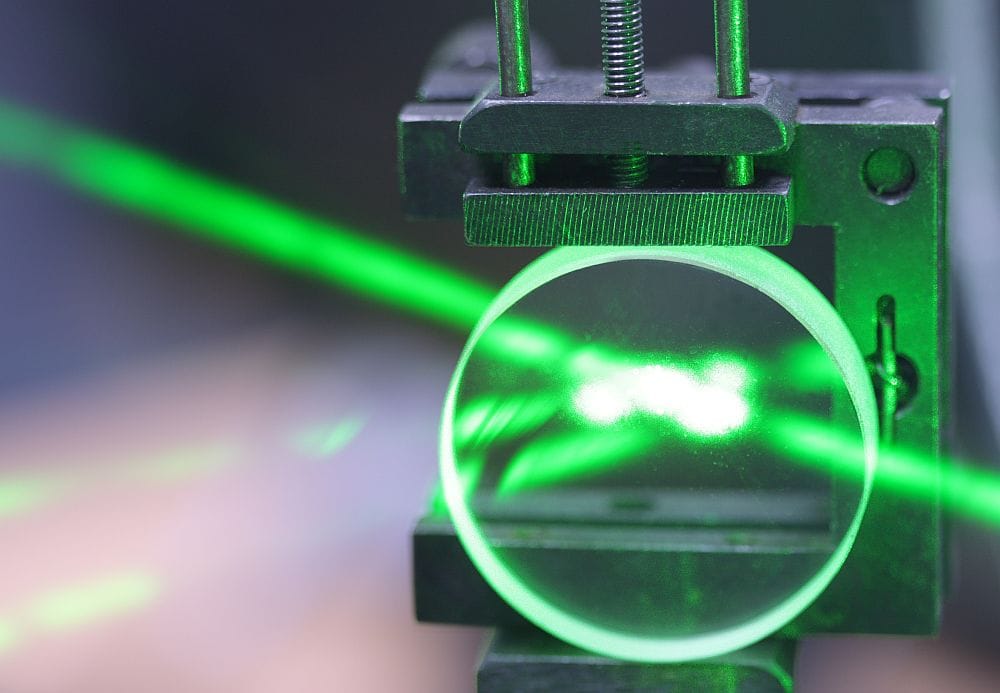
[Image above] A photograph showing the laser-ranging facility at the Goddard Geophysical and Astronomical Observatory in Greenbelt, Md. Here, scientists are using the visible green wavelength of light for tracking. The Lunar Laser Ranging station in Grasse, France, developed a new technique that uses infrared light instead. Credit: NASA
When it comes to space news, the big focus of recent weeks was the launch of NASA’s latest Mars rover, Perseverance.
The rover, which launched on July 30, is expected to land on Mars in February 2021. And once it does, Perseverance will seek signs of ancient microbial life and collect rock and soil samples for possible return to Earth.
In all the excitement over Perseverance, another piece of space news published last week slipped by without much fanfare. But in terms of immediate science impact, this news is far more exciting than the launch of another rover.
For the first time, researchers at NASA, in collaboration with French colleagues, succeeded in reflecting a laser beam launched from Earth off a spacecraft orbiting the moon. To understand the importance of this result, we need to look at the history of using laser beams to survey the moon.
Laser Ranging Retroreflector: Apollo’s longest-lasting science experiment
During the “space race” between Russia and the United States in the 1950s–1970s, the Apollo missions were not just about landing humans on the moon. The Apollo astronauts conducted numerous science experiments as well, including studies of lunar soil, dust, and wind and studies on the moon’s gravitational acceleration.
Fifty years later, one science experiment from the Apollo era continues operating today—the Apollo Reflector Experiment.
Officially termed the Laser Ranging Retroreflector experiment, the experiment consists of five reflecting panels on the moon off which scientists based on Earth reflect laser beams. The time it takes the laser beam to reach the reflectors on the moon and travel back tells scientists about the moon’s orbit and distance from Earth but also about more unusual moon properties, such as the fact the moon has a fluid outer core.
In the video below, John Brueger, who managed development of the Laser Ranging Retroreflector, discusses how the experiment came to be and explains in detail how it works.

Credit: MLive, YouTube
Unlike other instruments, the reflectors do not require power to operate, which is why they are still in use today. However, the efficiency at which they reflect laser beams back to Earth has diminished noticeably over the past 50 years.
Some experts suspect dust is the cause of the reduced efficiency, potentially having settled on the reflectors over time. However, proving this hypothesis requires an accurate reflection from the moon to Earth by which to compare.
And that is where the Lunar Reconnaissance Orbiter (LRO) comes in.
Lunar Reconnaissance Orbiter: From one-year mission to decade of exploration
The LRO is a large robotic spacecraft developed at NASA’s Goddard Space Flight Center.
When LRO launched in conjunction with the Lunar Crater Observation and Sensing Satellite in June 2009, it was the first U.S. mission to the moon in more than 10 years.
The primary goal of LRO was to make a 3D map of the moon’s surface from lunar polar orbit to aid in future human and robotic missions to the moon. However, once its initial mission ended in September 2010, NASA extended the goals of LRO to continue lunar science and exploration.
You can learn about several of LRO’s achievements in the video below, which was made to celebrate its 10th anniversary last year.

Credit: VideoFromSpace, YouTube
Among the many sophisticated instruments LRO carries is a small, book-size reflector mounted on top of the spacecraft. The reflector was included so scientists could reflect a laser beam from the moon back to Earth and compare results to values obtained from the moon-based reflectors.
Of course, successfully hitting the LRO reflector is a lot easier said than done.
Just consider the difficulties associated with hitting the moon-based reflectors. “Thus, what begins as a light beam that’s about 10 feet, or a few meters, wide on the ground can spread out to more than 1 mile, or 2 kilometers, by the time it reaches the Moon’s surface, and much wider when it bounces back. That translates to a one-in-25-million chance that a photon launched from Earth will reach the Apollo 11 reflector,” a NASA press release reports.
Now consider the LRO reflector is only a tenth the size of the Apollo 11 reflector, and it is attached to a fast-moving target that is, on average, 384,400 km (238,900 miles) from Earth.
“That’s why despite several attempts over the last decade NASA Goddard scientists had been unable to reach LRO’s reflector,” the press release continues.
And that was the status of things—until 2018.
Bouncing off LRO: Infrared light key to successful reflection
In 2018, NASA researchers collaborated with scientists at the Lunar Laser Ranging station in Grasse, France, to see if the Grasse facility would be more successful in reflecting a laser off LRO.
Compared to previous attempts that used a laser beam in the visible green wavelength of light, “Grasse is capable of laser ranging at 1064 nm wavelength [infrared] with single photon detection, which has been proven to be more advantageous than 532 nm [green light],” they write in an open-access paper on the experiment.
On September 4, 2018, and again on August 23 and 24, 2019, the researchers successfully reflected and recorded infrared laser light from LRO for the first time. The recorded light was minimal—only about 200 photons out of the tens of thousands of pulses cast at LRO—so it could not resolve the dust question. However, the fact they succeeded in reflecting light back at all gives the researchers hope of improving the process and helps them prepare new attempts.
“As we accumulate returns in different geometry and configurations, but mostly improve the statistics with more passes, we will be able to perform a detailed quantitative study to ascertain the possible degradation of the surface [laser retro-reflector arrays] due to dust deposition,” they write.
Of course, placing new reflectors on the moon would help resolve the dust question as well. And NASA plans to do so—they funded a set of Next-Generation Lunar Retroreflectors as part of the agency’s Artemis lunar program.
The open-access paper, published in Earth, Planets and Space, is “First two-way laser ranging to a lunar orbiter: infrared observations from the Grasse station to LRO’s retro-reflector array” (DOI: 10.1186/s40623-020-01243-w).
Author
Lisa McDonald
CTT Categories
- Aeronautics & Space
- Material Innovations


